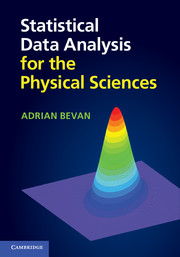Book contents
- Frontmatter
- Contents
- Preface
- 1 Introduction
- 2 Sets
- 3 Probability
- 4 Visualising and quantifying the properties of data
- 5 Useful distributions
- 6 Uncertainty and errors
- 7 Confidence intervals
- 8 Hypothesis testing
- 9 Fitting
- 10 Multivariate analysis
- Appendix A Glossary
- Appendix B Probability density functions
- Appendix C Numerical integration methods
- Appendix D Solutions
- Appendix E Reference tables
- References
- Index
7 - Confidence intervals
Published online by Cambridge University Press: 05 July 2013
- Frontmatter
- Contents
- Preface
- 1 Introduction
- 2 Sets
- 3 Probability
- 4 Visualising and quantifying the properties of data
- 5 Useful distributions
- 6 Uncertainty and errors
- 7 Confidence intervals
- 8 Hypothesis testing
- 9 Fitting
- 10 Multivariate analysis
- Appendix A Glossary
- Appendix B Probability density functions
- Appendix C Numerical integration methods
- Appendix D Solutions
- Appendix E Reference tables
- References
- Index
Summary
This chapter develops the notion introduced in Chapter 6 on how one defines a statistical error and extends this to look at one- and two-sided intervals (see Sections 7.1 and 7.2). One-sided intervals fall into the categories of upper or lower limits, which we can place on a hypothesised effect or process that has not been observed (see Section 7.2). Each of these concepts can be interpreted in terms of a frequentist or Bayesian approach. Section 9.7.3 discusses the concept of Bayesian upper limits in the context of a fit to data, and Appendix E contains tables of integrals of several common PDFs that can be used to determine confidence intervals and limits.
Two-sided intervals
The relevance of two-sided confidence intervals is discussed in the context of useful distributions used to represent PDFs. In particular the following sections highlight the use of Gaussian, Poisson, and binomial distributions as particular use cases of such intervals.
In general, for a distribution f(x) given by some variable x, we can define some region of interest in x called a two-sided interval such that x1 < x < x2.
- Type
- Chapter
- Information
- Statistical Data Analysis for the Physical Sciences , pp. 93 - 113Publisher: Cambridge University PressPrint publication year: 2013



